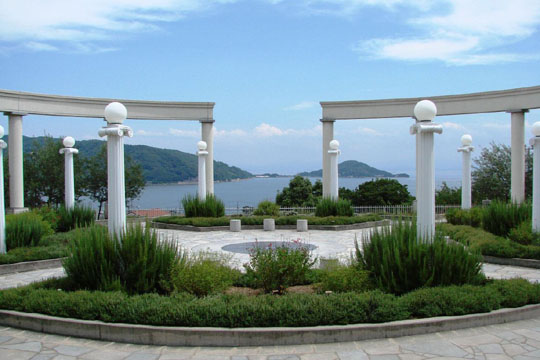The windmill is the first thing I notice, its delicate white blades gleaming against the cloud- flecked sky. Nearby, a semi-circle of polished Doric-style columns occupies prime position overlooking the glassy sea. As a breeze blows gently through olive trees on the shady hillside, it's easy to imagine I've landed on some idyllic Greek isle.
Instead, this is Shodoshima (Shodo Island), at just 152 sq. km, the second-largest (after Awajishima) of more than 800 islands in Japan's Inland Sea, and the only one where commercial olive groves impart a taste of the Mediterranean.
Olives aren't indigenous to Japan, making the pale-green-leafed trees a somewhat anomalous site spread across the island's slopes. But Olive Park, an organic farm-cum-Greek theme park on Shodoshima's southern slopes facing the island of Shikoku, does a fine job of allowing visitors to trace — and taste — the story of this bountiful tree and how it came to take root in this part of the world.















With your current subscription plan you can comment on stories. However, before writing your first comment, please create a display name in the Profile section of your subscriber account page.